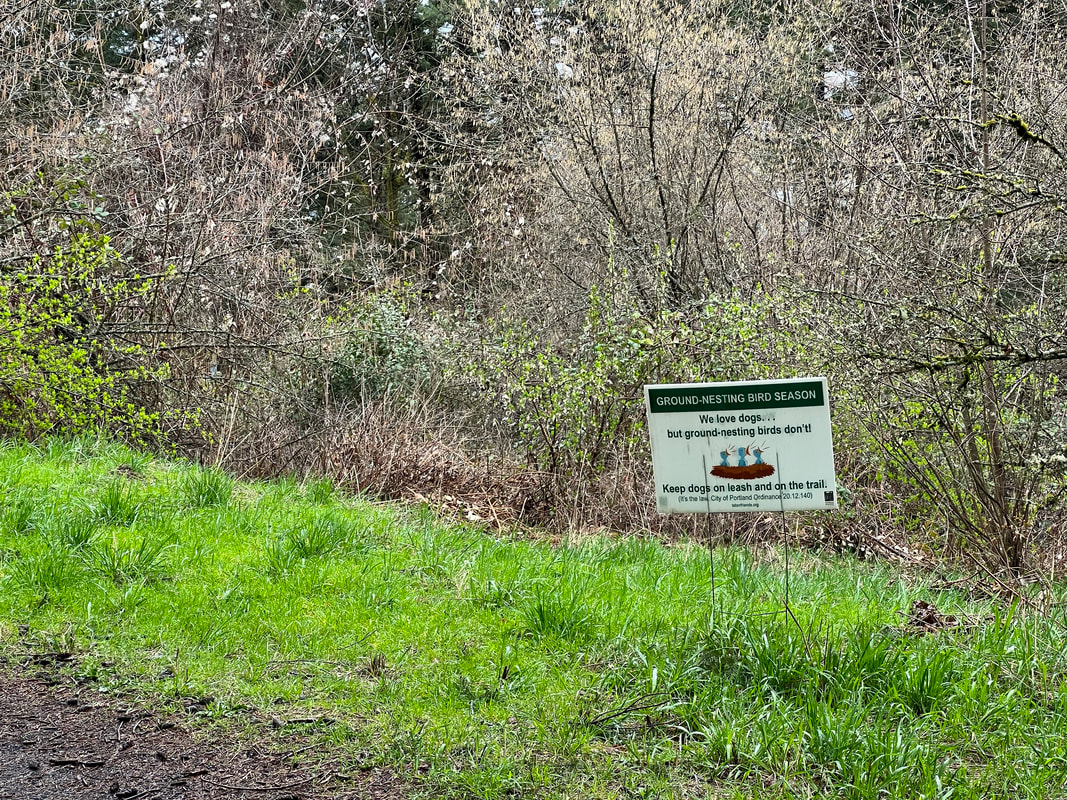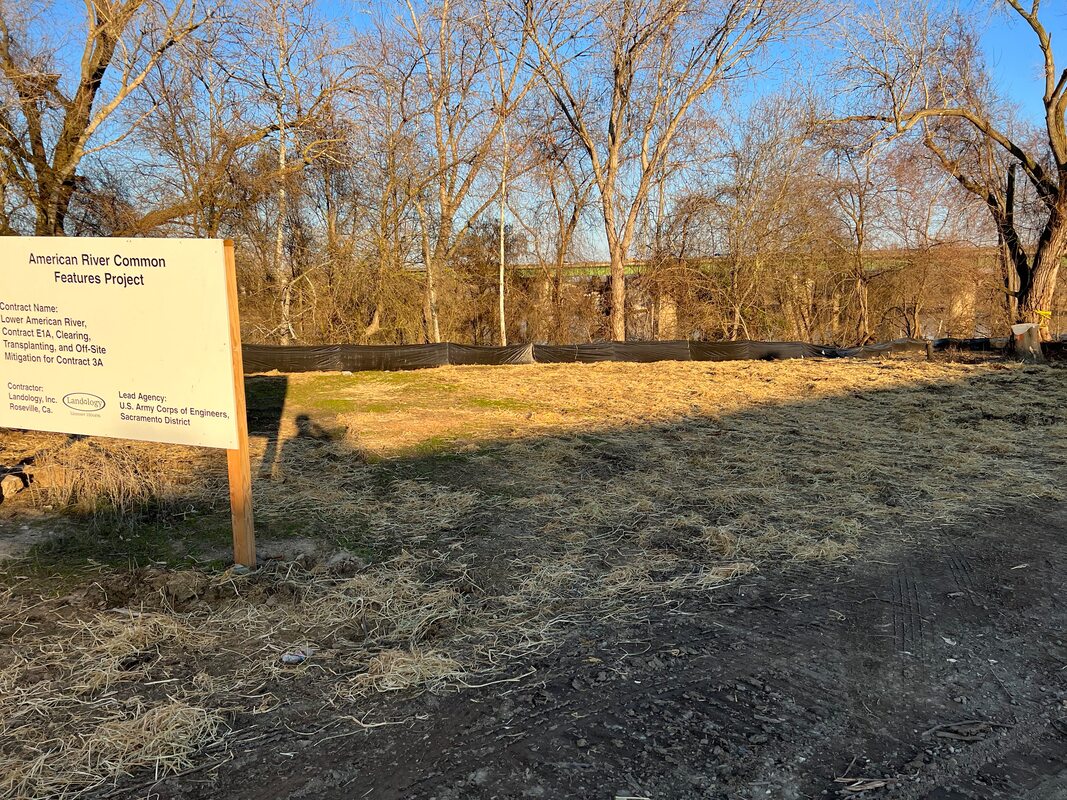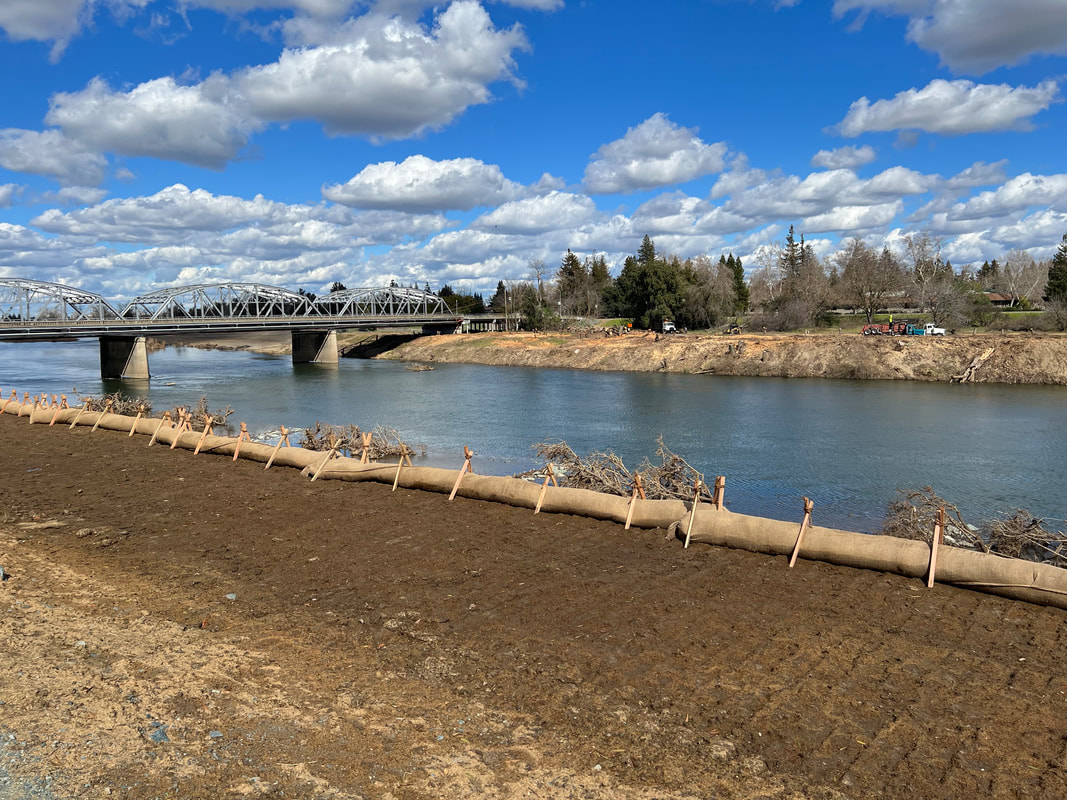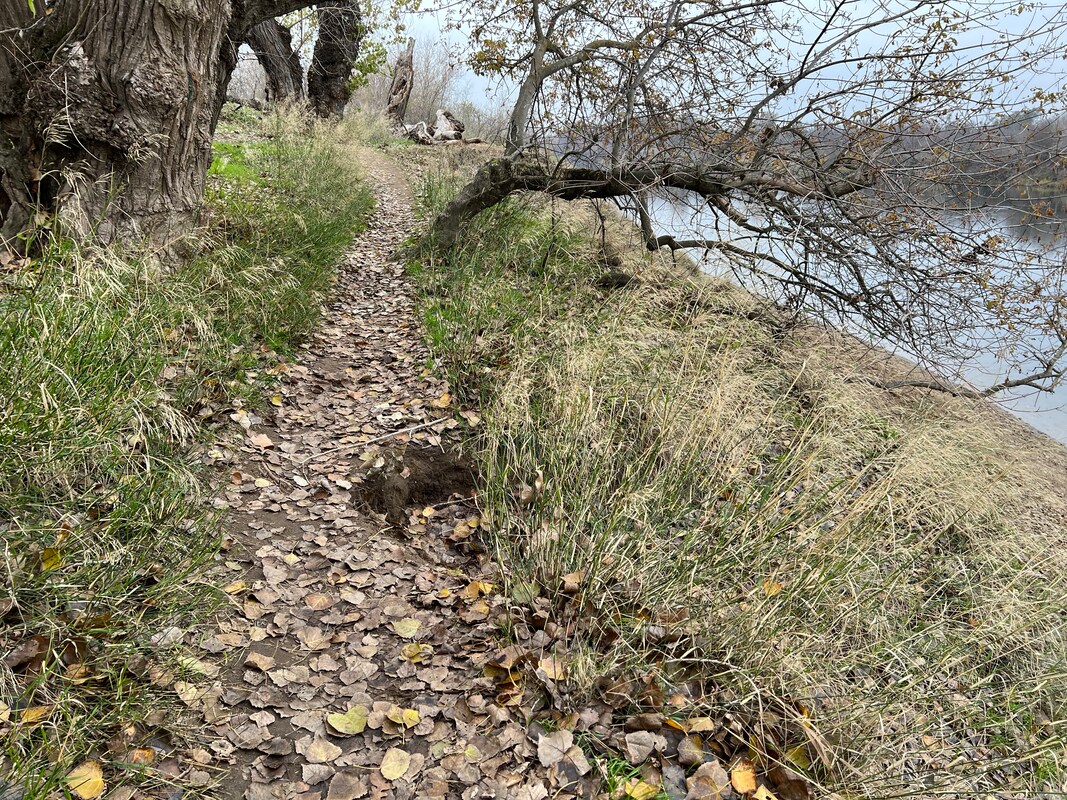Spring is back, with continuing atmospheric rain events this year, and this is the primary nesting and breeding season for wildlife. During this season, habitat is very important as food and shelter for all wildlife raising their young. Unfortunately, there has been increased erosion and vegetation loss at SLP and the adjacent lower American River Parkway impacting remaining habitat. Much of this damage can be seen along the bluffs above the river where foot and bicycle activity has compacted soils and increased natural erosion. A number of mature standing trees fell into the river during recent storms. Again, this is a natural process but there has been a definite increase in recent years. There has also be a loss of river edge habitat from trampling and removal during human activities at SLP creating a larger beach area with warmer water temperatures for fish.
These habitat areas need to be avoided so that vegetation can reestablish with roots to hold more soil in place. On the SLP side of the river there is very little habitat remaining between the waters edge and the levee. The recently constructed Two Rivers trail segment encouraged more off-pavement activity in these habitats with now well established "volunteer" trails and disturbance. Further upstream, most or even all the remaining riparian habitat has been removed for a Caltrans bridge project and Army Corps levee work. Very little habitat remains now from the footbridge at Sac State down to SLP. Much of the mitigation for this work will be planted offsite upstream and it will be quite a while before habitat reestablishes in the remaining areas. This makes existing habitat even more important for wildlife especially with nesting and breeding seasons well underway.
FOSL and FORB are working with the City and County to get more signage in place and control access in disturbed areas. Signs like those used in popular parks in Portland would help lessen impacts and remind people to enjoy nature without disturbing wildlife. Expect to see signs and perhaps barriers to help remind all that wildlife need help by protecting habitat and avoiding nesting or other sites with young animals. Hopefully more habitat restoration work will be planned, approved and funded to get underway soon.
FOSL and FORB are working with the City and County to get more signage in place and control access in disturbed areas. Signs like those used in popular parks in Portland would help lessen impacts and remind people to enjoy nature without disturbing wildlife. Expect to see signs and perhaps barriers to help remind all that wildlife need help by protecting habitat and avoiding nesting or other sites with young animals. Hopefully more habitat restoration work will be planned, approved and funded to get underway soon.
Finally, spending time outdoors is unique and precious providing many values. But not everyone has an easy time getting outdoors. Too often, a lack of local parks or being made to feel unwelcome limit such experiences. What if you don't have vision to experience nature? It's not uncommon to encounter a "five senses" trail with stations designed for our individual senses but these typically require sighted navigation. For many blind and low vision people, accessing outdoor spaces like parks can be challenging. Trails are often unsafe or difficult to navigate, signs don’t usually include Braille, and guides generally aren’t trained to help disabled visitors, and so on. I did a "Making Tracks" community radio program recently about a new type of trail that changes that. This seems like something that could fit well at SLP and the Parkway.
Now get out there and enjoy nature but remember to share it with wildlife and everyone else
Now get out there and enjoy nature but remember to share it with wildlife and everyone else










 RSS Feed
RSS Feed
